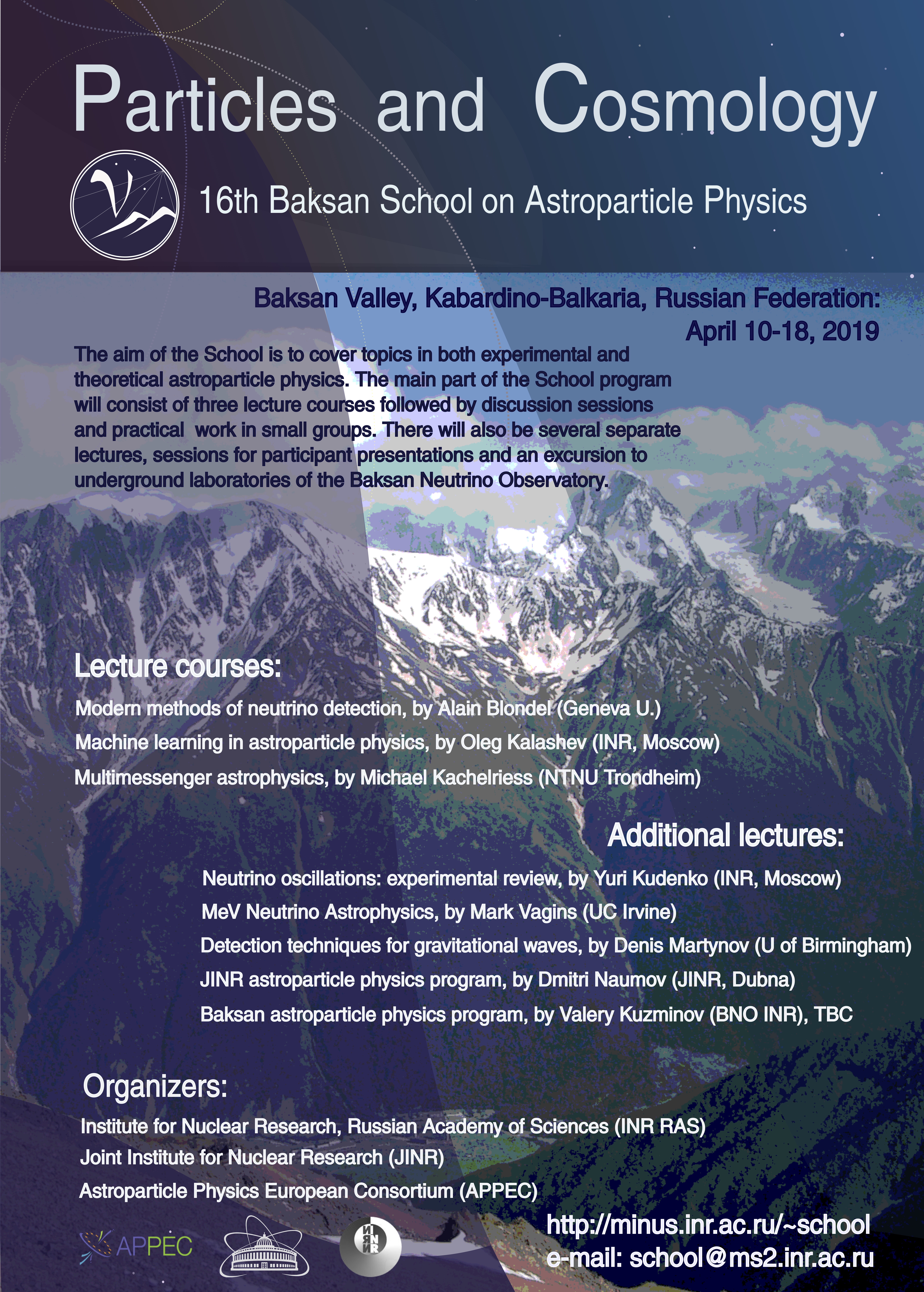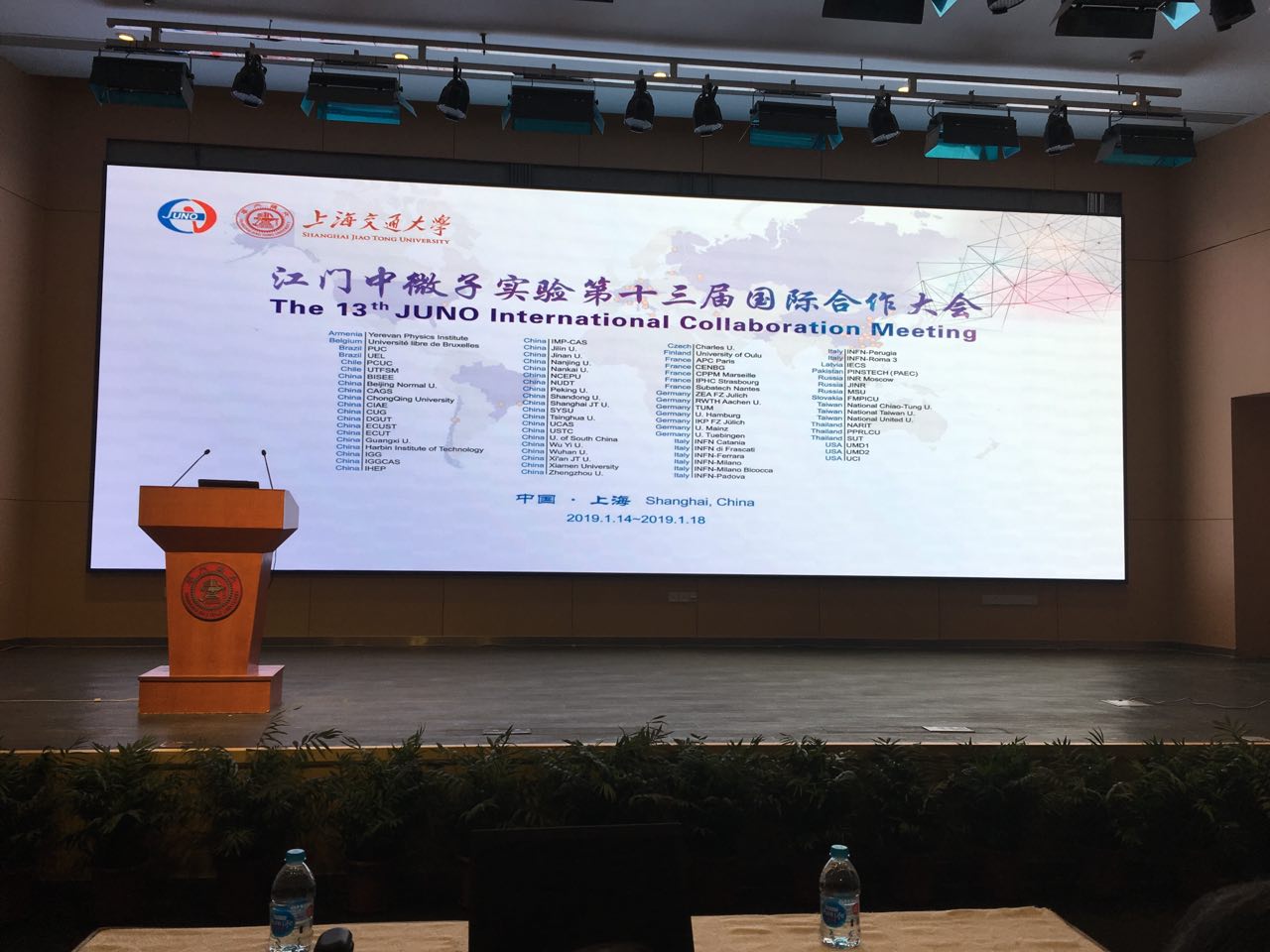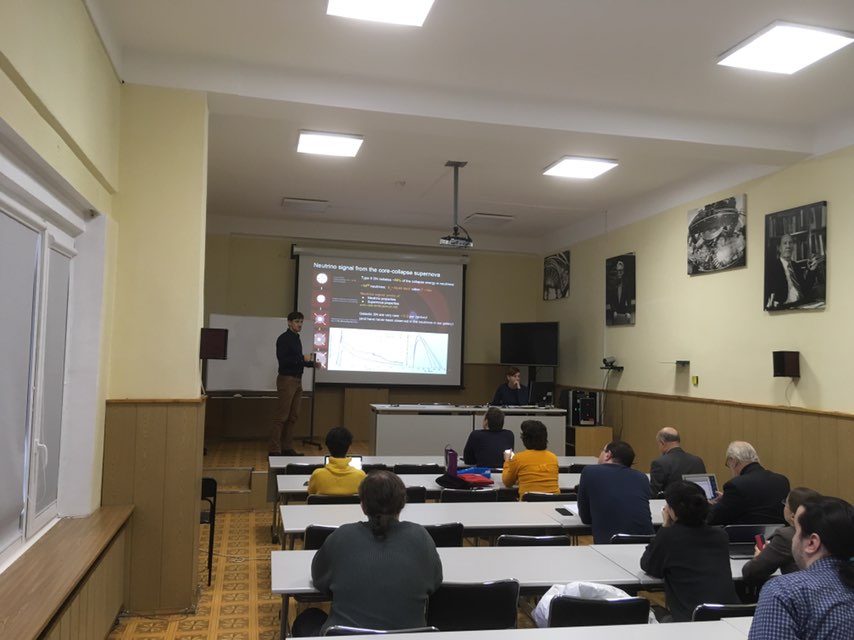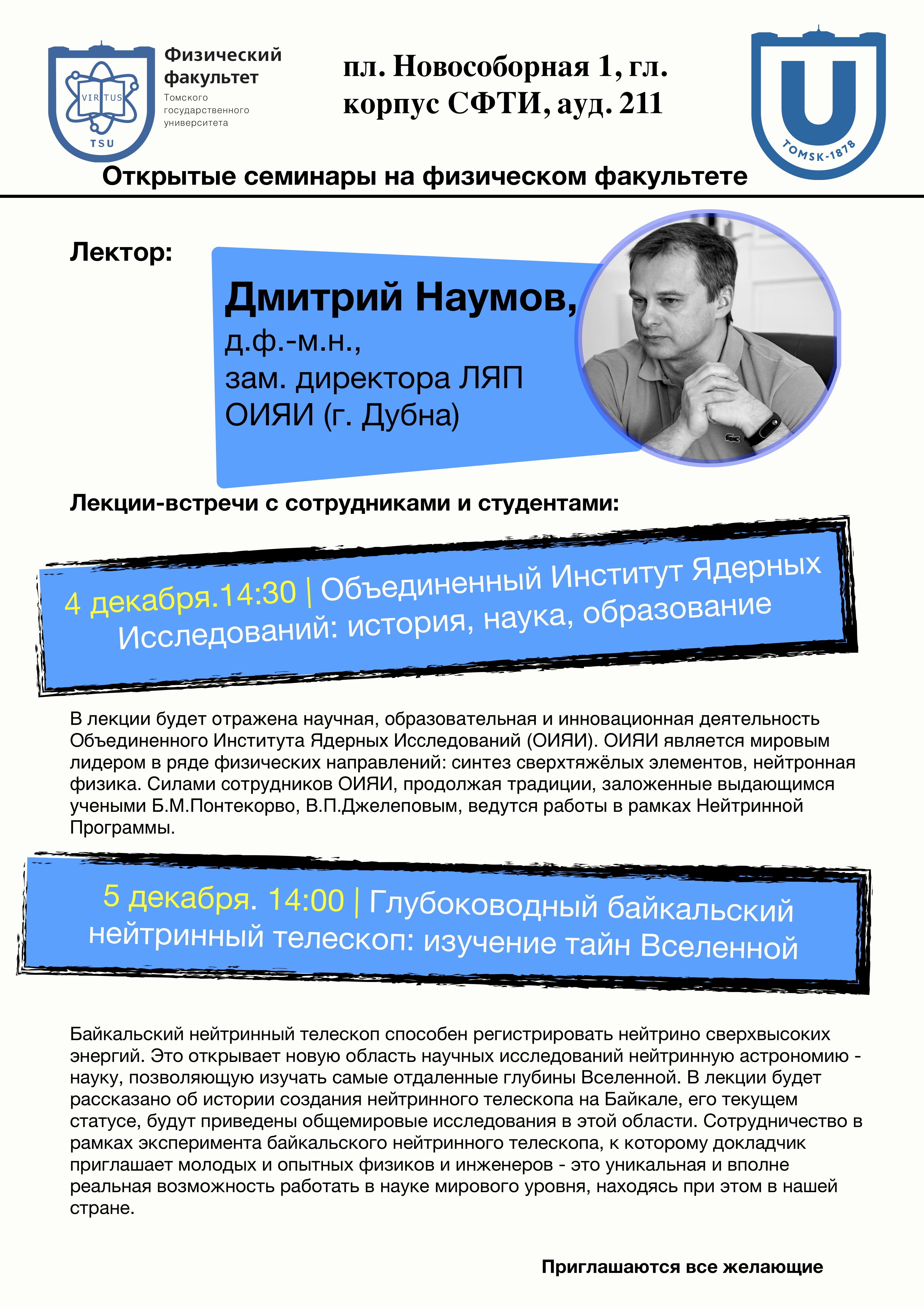News
21.01.2019
Young scientists, postdocs, and senior students focused on astrophysics and cosmology! Registration for the XVI Baksan School on Astroparticle Physics “Particles and Cosmology” is open until 1 February 2019. The School will be held in Terskol, Kabardino-Balkaria, Russia, on 10–18 April. The Organizers are the Institute for Nuclear Research, the Dzhelepov Laboratory of Nuclear Problems (Joint Institute for Nuclear Research), and APPEC.
The School is devoted to discussion of experimental and theoretical aspects of modern astrophysics and cosmology problems. The programmeincludes three main lecture courses with teaching aids, practical and discussion sessions, a few special lectures and a special seminar for participants’ presentations, and an excursion to the underground laboratories of the Baksan Neutrino Observatory.
14.01.2019
On 12–18 January 2019, a meeting on the JUNO project is held in Shanghai. JINR has been participating in the JUNO collaboration for about four years. In 2020, it is planned to begin commissioning of the reactor neutrino experiment in China, where construction of a large laboratory, the Jiangmen Underground Neutrino Observatory, is now well underway 150 km off Hong Kong. The main goal of the experiment is to determine the neutrino mass hierarchy by precision measurements of neutrino oscillations. JINR is represented by a team of about 10 scientists, mainly from our laboratory.
19.12.2018
Investigations aimed at searching for possible existence of quark–antiquark pairs in a nucleon with a distribution similar to the distribution of valence quarks at large fractions of the quark momentum were reviewed.
05.12.2018
We congratulate Andrei Sheshukov on winning the First Prize in the category “Scientific methodological and scientific technical work” of the JINR Prize Competition for young scientists and specialists!The participants in the competition were the winners of the section sessions of the JINR AYSS conferences and schools AYSS2018, Alushta 2018, and FallingWalls LabDubna 2018.
03.12.2018
On December 4–5, 2018, D.N. Naumov will hold lecture meetings with the teaching staff and students of the Faculty of Physics at Tomsk State University.He will talk about the scientific, educational, and innovational activities of our institute, elaborating on the Neutrino Programme, especially the deep-water Baikal neutrino telescope.Collaboration within the Baikal–GVD experiment is a unique and quite real opportunity to participate in the world-class research project.
23.11.2018
NOvA is the accelerator-based experiment located at Fermilab (USA) and designed to study neutrino oscillations (appearance of the electron neutrino and disappearance of the muon neutrino in the neutrino/antineutrino beams).It is one of the new-generation experiments with two detectors arranged at an angle of 14 mrad with the NuMI beam from the accelerator and separated by 810 km of earth formation.The primary goals of the experiment are search for CP violation in the lepton sector and measurement of the neutrino mass hierarchy and a few oscillation parameters with a better accuracy.
22.11.2018
The BESIII experiment is being conducted at the BEPCII electron–positron collider with the annihilation energy of 2 to 4.6 GeV in Beijing. The collider has a record luminosity (10^33/cm^2/s) for this energy range.The collected statistics of the experimental data is 1–2 orders of magnitude higher than statistics of other experiments.The BESIII research programme is quite wide, including study of charmed particles and charmonium states, light hadron spectroscopy, tau-lepton physics, search for new physical phenomena, and a lot more.
20.11.2018
Preview of the seminar on high-energy physics and nuclear structure, 19.11.2018. Energy and time spectra of γ-radiation from the muon capture on Se, Cd, Kr, Sm, and Ti isotopes are measured using HPGe detectors.
14.11.2018
Preview of the popular-science lecture by D.V. Naumov reviewing the status of dark matter in the Universe.
08.11.2018
New Borexino results on measurement of solar neutrino fluxes were published in Natureon 25 October. Simultaneous spectral analysis of neutrino fluxes from the pp, Be-7, and pepreactions was performed for the first time. Unlike previous ones, this analysis was made in a wide energy range including three components of the solar neutrino spectrum.
06.11.2018
The review lecture “Solar neutrinos” by D.V. Naumov is intended for a wide audience beginning with junior students.
30.10.2018
The General Laboratory Seminar on the Modane Underground Laboratoryin the Fréjus Tunnel (France) was given by Fabrice Piquemal at DLNP on 29 October 2018.













